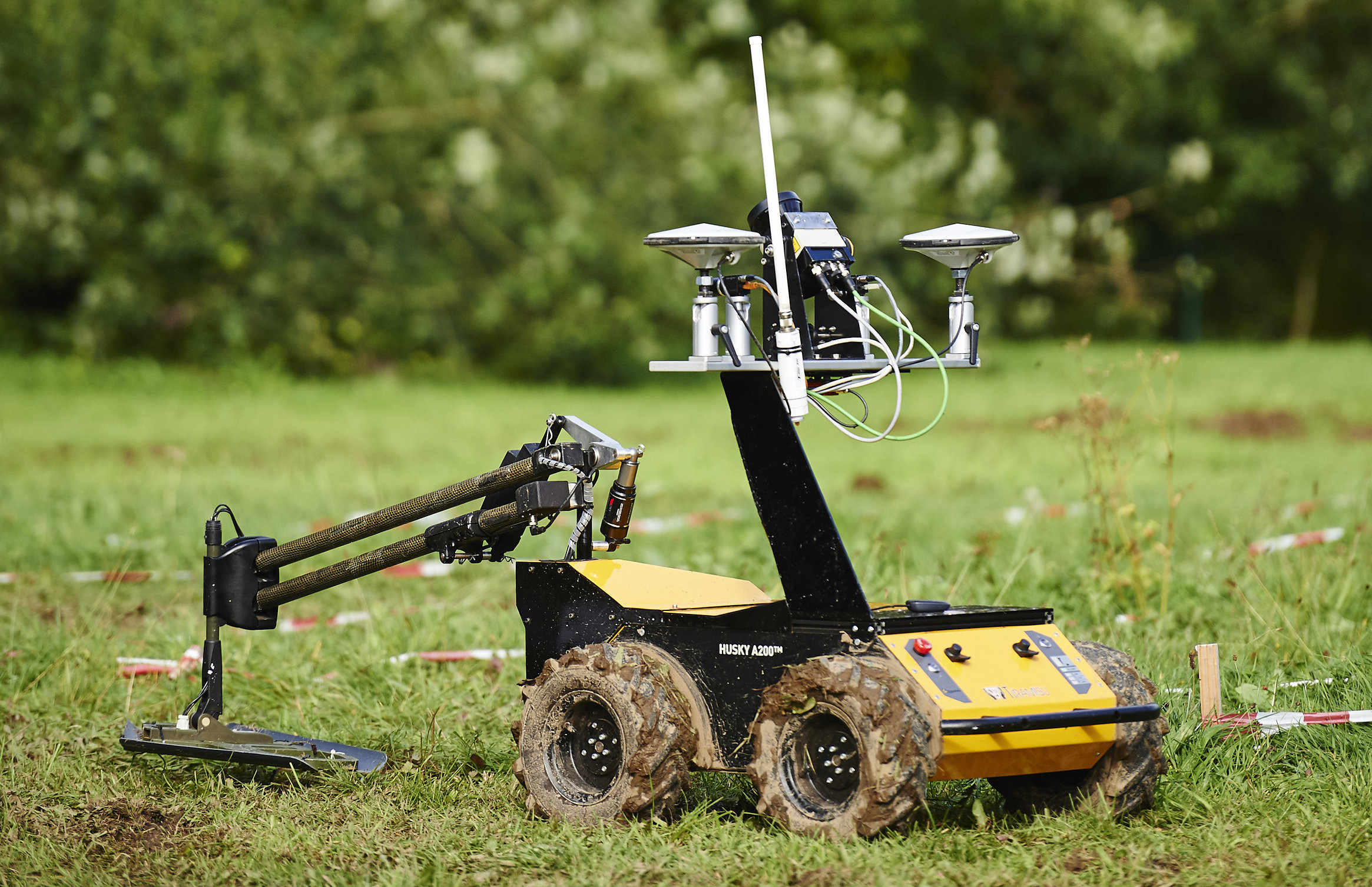Skid-steering platforms are robust and simple platforms commonly used in field robotics applications, including demining, agriculture, and environmental surveying and monitoring. These platforms are very energy-efficient and provide relatively accurate odometry estimates, while driving straight. However, their skid approach requires significant power to rotate and common odometry models are so inaccurate for this type of motion that heading estimates provided by this sensing source becomes useless.
In order to address these problems, the ISR Field Robotics team studied both the power consumption and the kinematics of skid-steered platforms and proposed new models that set themselves apart from existing work.
Having the ability to know the kinematic behavior of a robot during the design phase allows making proper decisions to achieve a desired kinematic behavior. During field operations, an accurate kinematic model allows navigation even under adverse conditions, like loss of GNSS satellites signals. The model proposed by our team derives a physical relationship connecting the geometry of a skid-steered to its kinematic model. Moreover, conventional approaches fail to take into account the changes in the kinematic behavior of a skid-steered robot as its center of mass changes. The change in the center of mass could be drastic, and hence a conventional kinematic model calibrated for one configuration would need to be re-calibrated for the new center of mass. The model proposed by our group explicitly takes into account the center of mass position and hence allows adjusting the kinematic model without any new calibration procedure.
Existing approaches for power characterization of skid-steered robots suffer from similar issues. They usually model the power consumption like a black-box, not taking into account the robot’s geometry and the center of mass location. The model proposed by our team takes all these aspects into account, and allows accurate estimation of power consumption with varying robot’s configurations and changing radius of curvature. This capability allows running optimization algorithms both to find energy optimal paths, and more importantly, to solve the coverage path planning problem for demining large areas in an energy efficient manner.
Sedat Dogru and Lino Marques, “A Physics Based Power Model For Skid-Steered Mobile Robots”, IEEE Transactions on Robotics, 34(2): 421 – 433, April 2018. http://dx.doi.org/10.1109/TRO.2017.2778278

